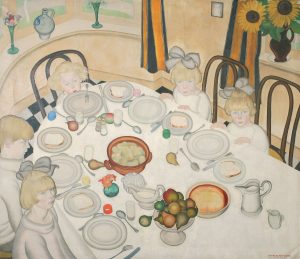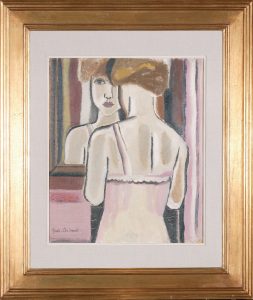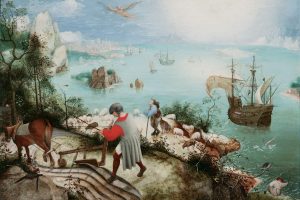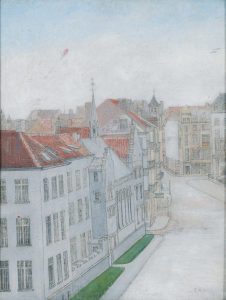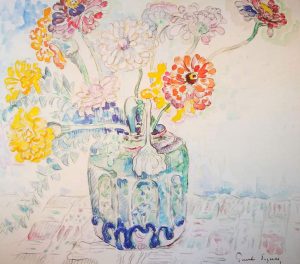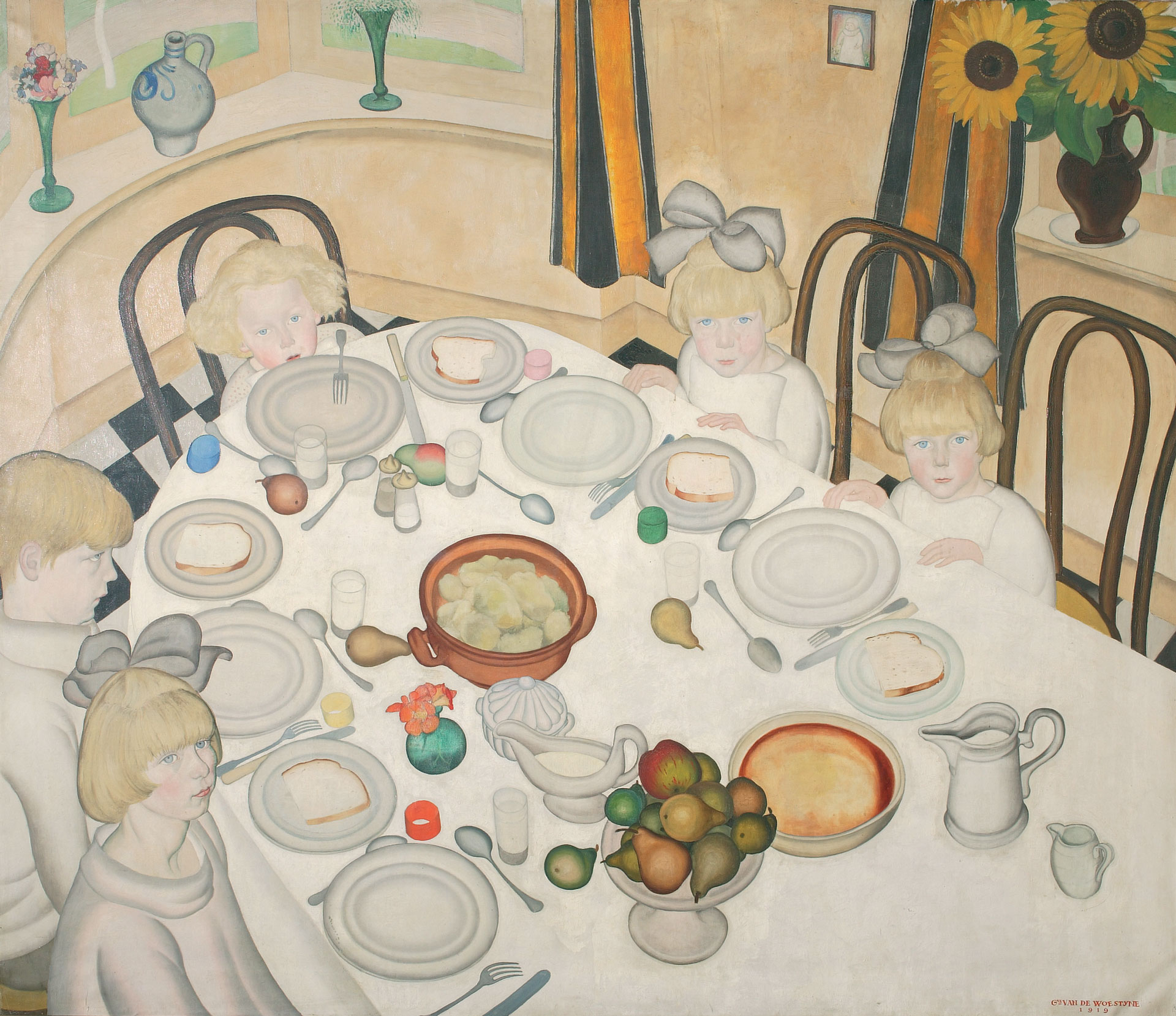
Gustave Van De Woestyne (1881-1947)
The children’s table, 1919
Painted when he lived in Waregem and offered to the Van Buurens in 1922 by their friend, Jacob de Graaf, the painting “The children’s table” depicts a seemingly banal but frozen scene. The painter’s five children do not seem to be communicating in any way. Their eyelash-free eyes have a look of disturbing coldness.

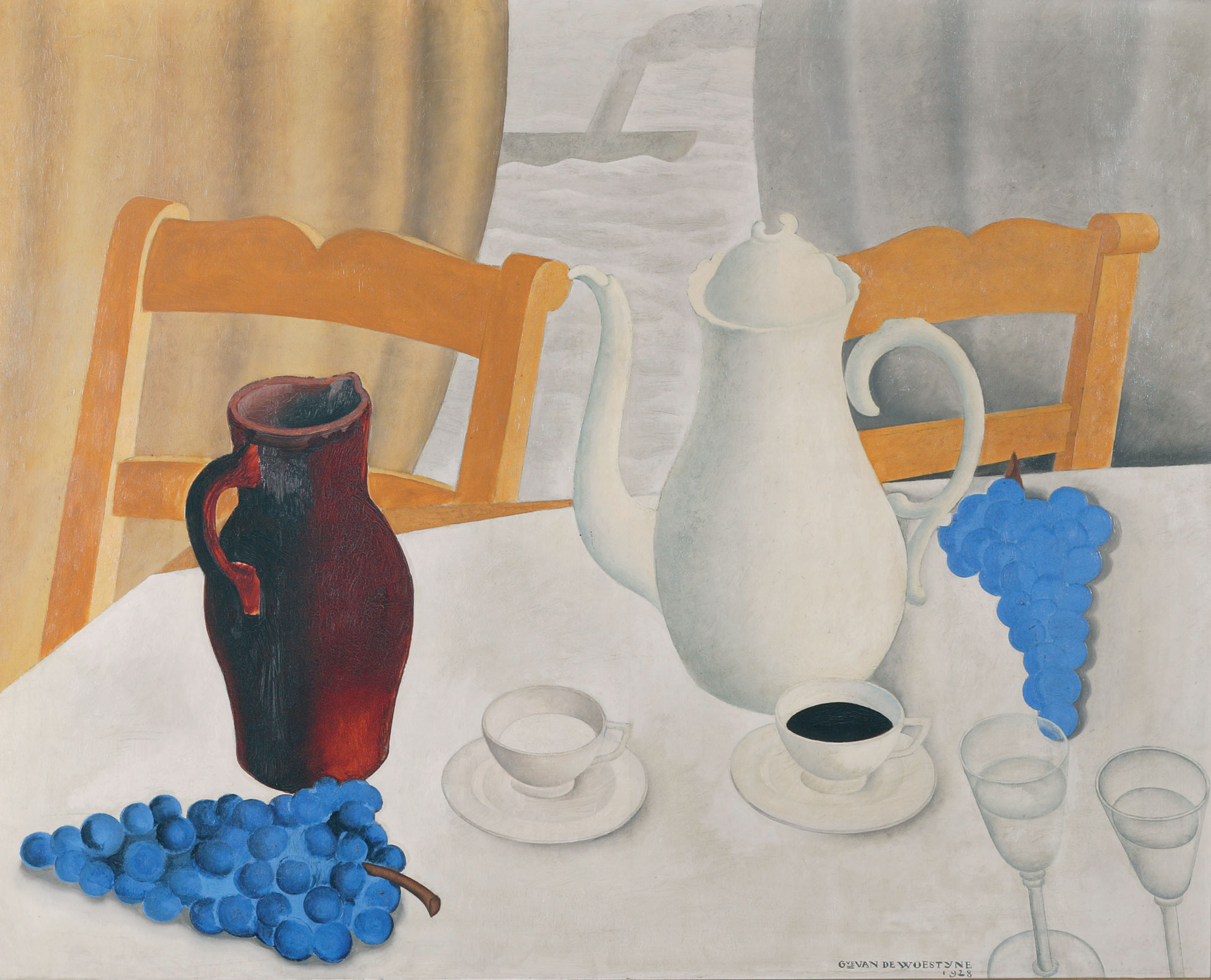
Gustave van de Woestyne never painted from life. For the dining room’s paintings, as for all of his still lifes, the result on the canvas was markedly detached from the composition laid out in front of him.


The Shepherd, 1910
Gustave van de Woestyne began his portraits with a detail, most often the eyes, which were always without eyelashes, with the picture then being built up naturally. With “The Shepherd”, the landscape in the background remains of secondary importance. The artist provides us with a portrait of a man lost in his dreams and out of touch with reality.

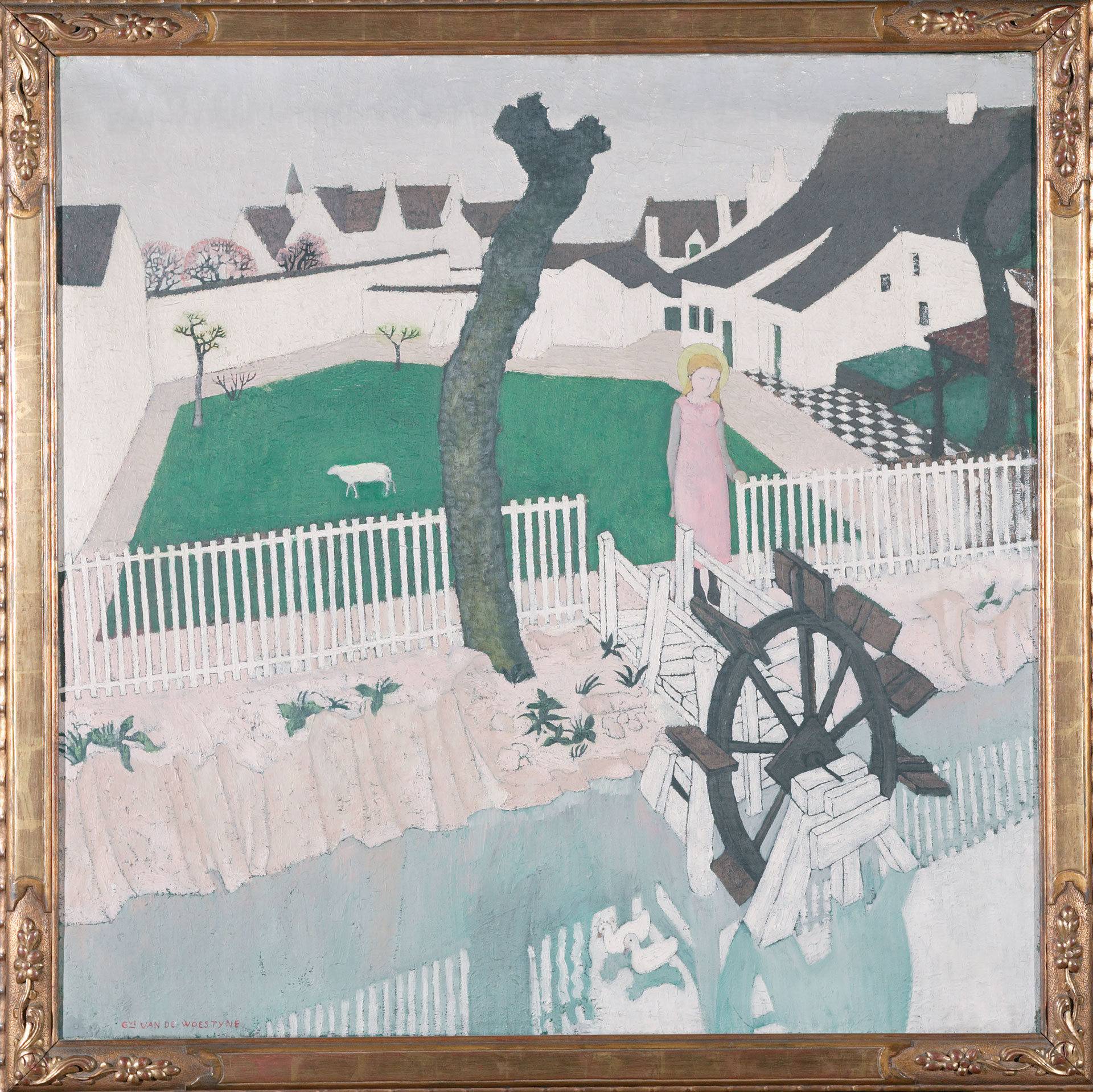
The acquisition of ‘The garden of St Agnes’ marked the beginning of a long friendship between David Van Buuren and the artist. The museum had up to thirty-two works by the painter. David was his only patron, buying many canvases from the artist but also supporting him financially throughout his career.

